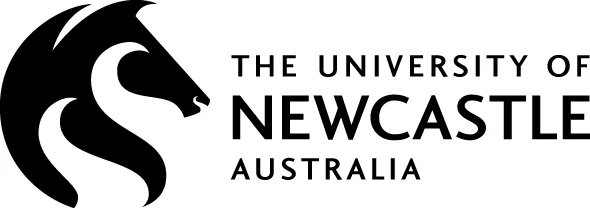Renowned architect, architectural historian, philanthropist and champion of Pakistan’s cultural heritage, Yasmeen Lari was recently in Melbourne for Humanitarian Architecture Week at RMIT. Yasmeen generously gave her time to speak with Alison Cleary and Susie Ashworth about life as Pakistan’s first woman architect, how the role of the architect needs to change, and the joy that comes from humanitarian work.

The challenges of being Pakistan’s first woman architect
I’m not sure whether I had as much difficulty being Pakistan’s first woman architect as might be imagined, looking at the status of women in my country. If you come from a privileged background, you do not have as much of a problem, because you have a support system. For women, it’s very important. If you have a support system, then you can work. It has to be your family, it has to be your parents, it has to be everyone around you.
It was rare to have that support when I took up the profession. There were very few women in the professions at the time and it was a struggle for them to really do the things they wanted to do. The only professions that were acceptable were either becoming a doctor or a teacher. Anything else that you might do was not really accepted so easily.
It was the family support that allowed me to carry on, especially my husband, who has given me the space. Otherwise, it would have been impossible. Of course, my children suffered in the process (laughs). But they have also been very good. I have been lucky. I’ve been able to do the things I’ve wanted to do – and every time I’ve taken up a cause, the support has been there from my family and everybody. So, that helps a lot.
If I compare myself with women architects in the West who are about my age, I think they probably had more difficulty than I did. It’s a strange thing to say, but I think that is how it was. Working in a third world country allows you to do many things, because there are so many deficits, there are so many issues and problems, and you can just see what you should pursue.
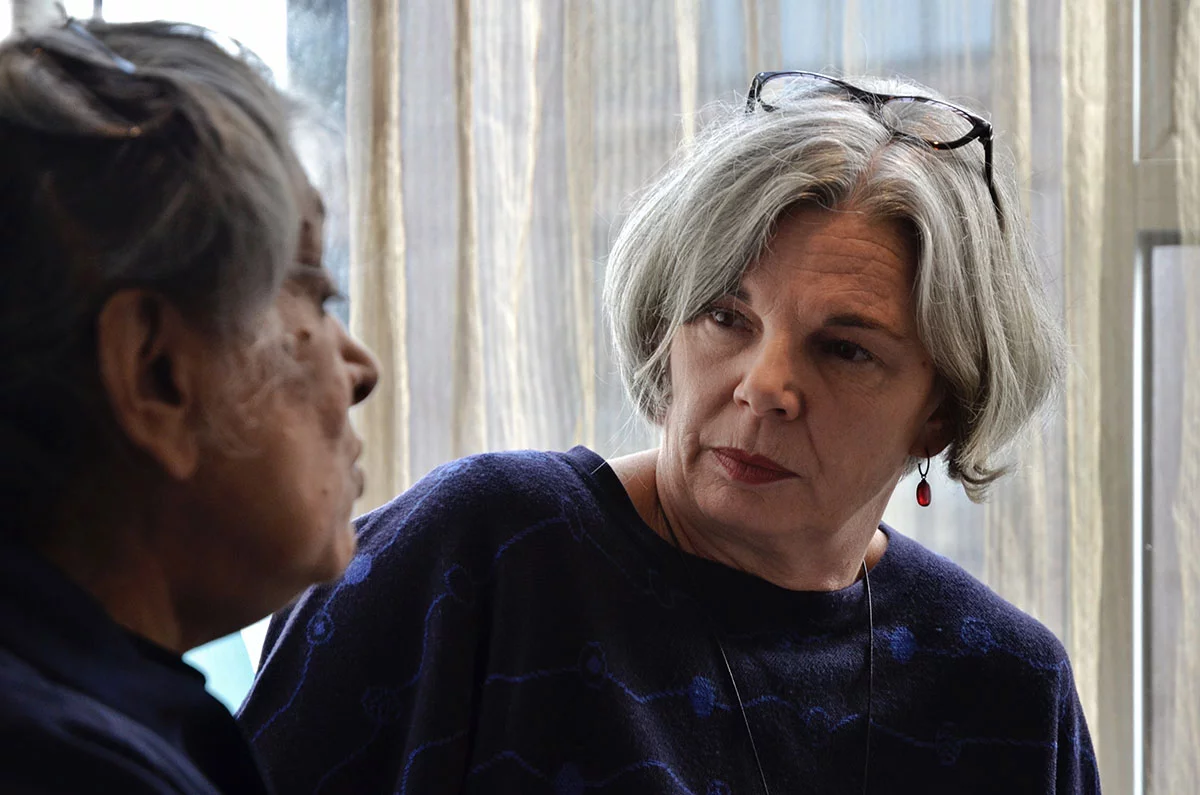
Practising architecture in Pakistan
I’ve taken up all kinds of activities as an architect. I was trained in the UK. I went to the Oxford School of Architecture [now Oxford Brookes University]. Then I came back to Pakistan and, really, I had to un-learn a lot of things. There was a whole phase in my life where I had to learn to understand what was actually the reality of my country. That’s what led me to have an abiding interest in heritage. And it happened that my husband is an avid photographer, so we’d go around to old cities and look at them, because we’d never actually been to see them before.
The problem – and this even exists today – is that the whole society is completely divided. We’d lived in exclusive areas and not known the common folk. We’d never had the chance to go out unsupervised. Someone was always there with you. We were never allowed to go into old cities.
I had gone off to England and come back, but I’d never really experienced ordinary life. So, for me, I felt it was important to understand what the traditions had been, what heritage was all about, where our roots were. This was close to the time that the British left, so we were still very much influenced by the thought of the rulers, which was that the local traditions and the local heritage was not very significant – that we should be looking to the West to learn everything. That was why I was sent off to England to study.
I learned a lot during that period of time. I travelled around the old cities of Pakistan looking at buildings – and I was able to do that at the same time I was working as an architect. I was very lucky again. I didn’t do many projects. I did a few houses in the beginning. A project would come along and I’d work on it and then a second one would come along, and I’d work on that. I was lucky I had some major projects. But there were many lean times in between. There was never a factory producing work all the time. So, while I was still carrying on my practice, we did a huge amount of heritage documentation and research.
Living and working in Pakistan has given me the chance to try many things in different areas. I’ve been able to work in heritage. I’ve been able to write books. I’ve been able to sit in the street and do advocacy for heritage. All kinds of activities. I haven’t worked anywhere else. I just feel that my place is in Pakistan. That’s where I can contribute the most and that’s where I should be working.
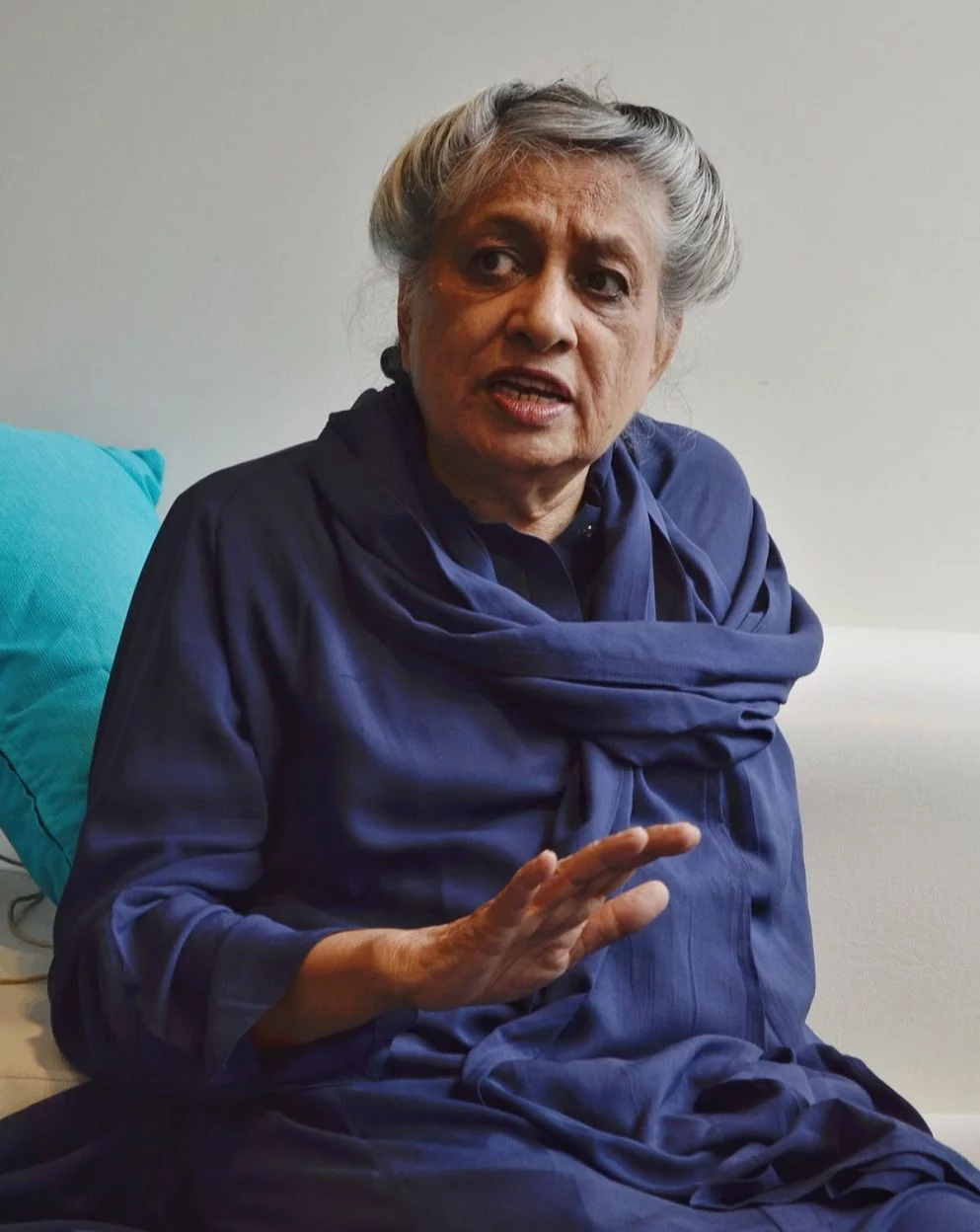
The importance of crusades
I have managed to carry out a lot of crusades. I fought for a lot of things. And there were some really troublesome times. But I managed to get through. It’s been very exciting at times. When there was no recognition of the profession, I decided that something needed to be done. So, when I became the President of the Institute of Architects in Pakistan in 1978, I took that on. There were a whole lot of engineers who had been practising as architects and they were threatened. They took out advertisements in the newspaper against me, saying “We’ve got to get rid of her”, that sort of thing. Sometimes it got really, really nasty. But I managed to succeed. I got recognition for the profession.
More recently, I’ve taken up the cause of heritage, and I’m talking about all the things that have gone wrong. We have an enormous heritage reservoir, thousands of heritage sites that are there, but they’re very neglected. So, I took up the issue with the Supreme Court and that has annoyed a lot of people. And sometimes people say, “We should bury her” and that kind of thing – but it hasn’t happened so far (laughs). This is part of life. If you take up a cause, you’ve got to be ready for the consequences that come your way. And the important thing is to hold onto what you believe in. It’s important to carry on.
The move into humanitarian work
Before the 2005 earthquake, I didn’t know anything about this kind of work. I’ve always been interested in heritage, and I’d tried to build a few mud buildings earlier when I was what you call a ‘star architect’, but I had never had a chance to work with people at the grassroots level. When I was growing up, 1947 was a very bloody year for us, because of the migration from India to Pakistan. My father happened to be the top bureaucrat to look after people coming in – and my mother would go to the refugee camps and work there. So, these were the memories that one had. The importance of public service was always with us as children.
But until 2005 I never had a chance. Life is very strange. Sometimes you don’t get the chance to do anything worthwhile – it just doesn’t happen. And I think you’re very lucky if you keep getting these opportunities. I just happened to be lucky. In 2000 my husband had retired from his business and he was writing books. And I said, “This is not on. I’m going to do the same thing.” (laughs) So, I retired. I gave up architecture. I was going to write my books. That’s what the plan was.
And then UNESCO got hold of me and invited me down to this World Heritage Site, Lahore Fort – an amazing site. And it was a privilege to work there. I didn’t seek it. I didn’t think I’d be doing it. It just happened. And the same thing happened with the earthquake. I never thought I’d be working in that kind of area, but like everybody else in Pakistan, when the earthquake happened I just had to go. I didn’t have a lot of money. I didn’t have an office. I had given up my practice. I was only doing a little bit of heritage work. I had nothing – no workforce, no money. I just went out to see what could be done. And it’s been an amazing learning experience. It has opened up a whole new world for me – and it’s been very rewarding. I’ve been learning a lot, trying to see how we can do better.
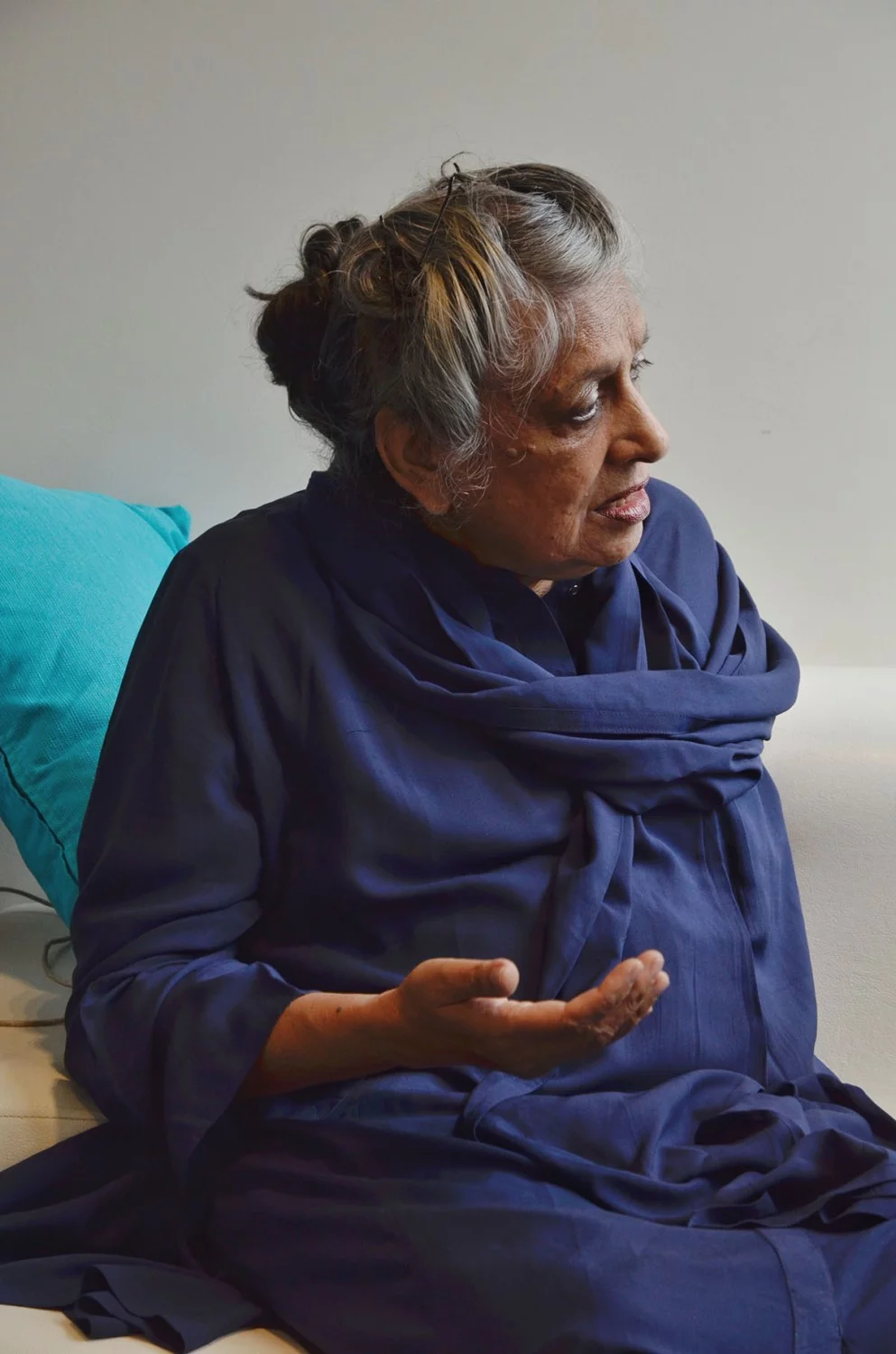
Vernacular traditions
When I first started working in these communities, it was difficult for them to accept me. I’m as much a foreigner as you might be. But you learn to be with them, to listen to them, to understand what they need – and then you have to work out the best way. But also, you have to look at their vernacular traditions. So, I work with mud. We have built an enormous number of structures in mud. The poor build with mud, and that’s what I use. The only thing that I do is I mix in lime, because it stabilises the mud and gives it water resistance.
Bamboo is also used a lot by the poor, but they don’t really know how to use it, so the structures are never strong enough. But there are buildings in the north of Pakistan that have wooden cross bracing. What I’ve done is to use bamboo as cross bracing instead. That makes the structures very strong. So, you’re building upon techniques or with images or with vocabulary that existed before. But you have to make them stronger with interventions so that they can withstand floods and earthquakes, the two major disasters we have in our country. That is what the attempt is.
Low-carbon structures
I only build low-carbon structures now. I don’t use cement and steel at all. There’s no need for it. That’s my mission now. That’s why I accept every invitation to go and make a presentation. I go everywhere I am invited. Next month I’ll be in Japan, and later in Makli we have an international heritage workshop ourselves, and then in November I will go to England. It’s very important to talk about low-carbon structures. You cannot build structures that use steel and concrete, and then say we can make them green, because you’ve already done the damage.
You then try to make sure that the building is green by lowering its energy consumption, but the damage is already there. The emissions have already taken place. So, that’s the whole issue. How do you actually convince the architectural community to build hybrid structures?
In the north of Pakistan after the earthquake, the World Bank and the Asian Development Bank said you’ve got to use reinforced concrete along with these horrible galvanised iron sheets. And the whole landscape has changed. It has destroyed the beauty that existed in this beautiful mountainous environment. Previously you couldn’t distinguish between the mountain and the house. It just melded into the landscape. But the original landscape has all gone now.
Two years ago, I was invited to Japan to accept the Fukuoka Art and Culture Prize – and I was excited to go and see how bamboo is being used today. But the regulations don’t allow them to use bamboo anymore, which is just extraordinary. And there is such beautiful bamboo in Japan, I cannot tell you, it is just so amazing. In Pakistan, we don’t have the kind of bamboo that Japan has – so now I intend to try to grow Japanese bamboo in Pakistan.
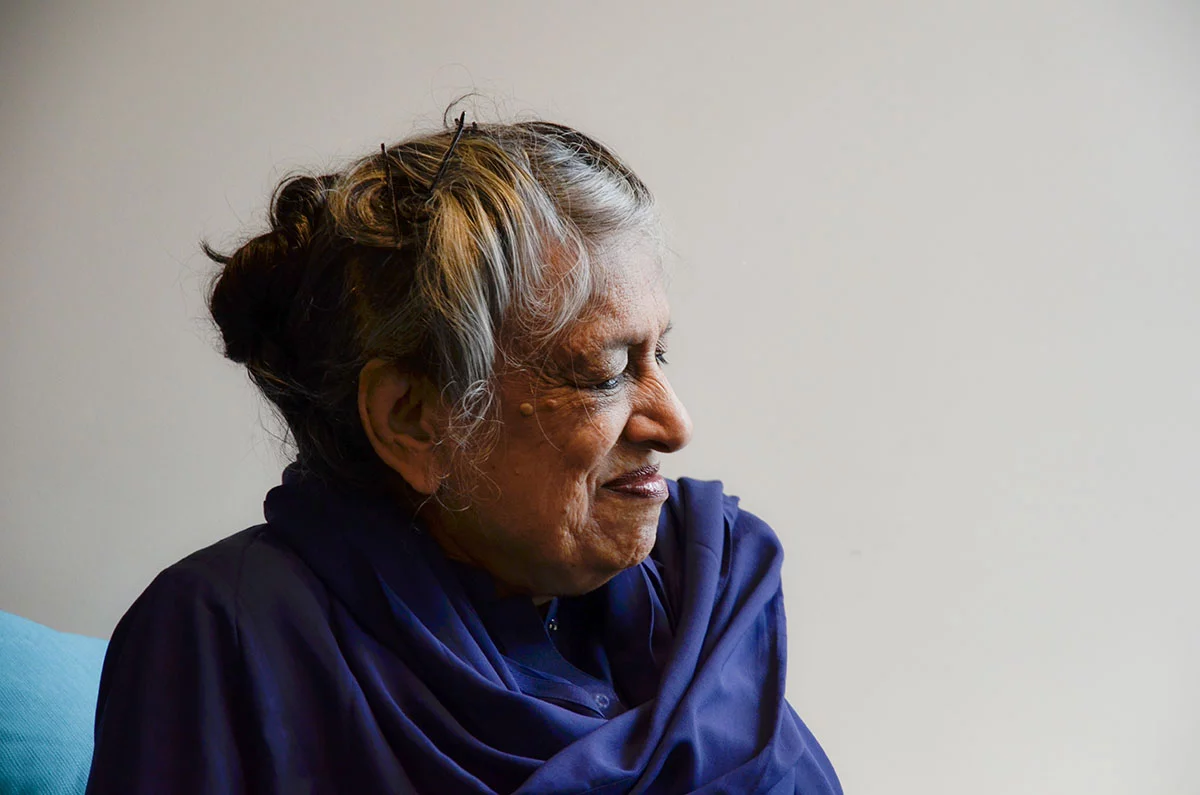
The role of the architect
I think the role of the architect in general should be changed. I talk about this a lot. Every architect wants to be God. This is what we’re trained for. And we want to build iconic buildings, and it’s the dream of everybody – and everybody has the right to do that. But I think looking at the reality of the world, especially the reality of the third-world countries, there is this huge mass of people who actually need help. And you need good designers there, not bad designers. You need the best architects in the world to think about what it is that they actually need.
I always say to my colleagues that you need to look at the villagers as if they are corporate clients. There is huge consultation that goes on in the corporate sector before they say yes to anything. We give them so much attention, we want to understand what they need. We go through so much effort to try and find out what is the best thing for them. If you just give the disadvantaged people what you think will be ok for them without consulting, then that’s not fair.
I think it’s a good idea for young architects to be working on all kinds of design issues, but I’d like them to be looking at hybrid structures. I’d like them to be looking at humanitarian architecture, to be focusing on people who have great need – and not only after huge natural disasters. In countries like mine, every time it rains it’s a disaster, so we need to be ensuring how to build better for the large numbers, so that they do not get displaced. That’s my main effort. How do we stop them from being displaced? Why should we only act when a disaster occurs? Why can’t we do something before? That’s when we need to build resilience. Because we spend huge amounts of money once the disaster occurs, and all the aid agencies are there – but what about in between? The people are living in the most awful conditions as it is.
There are simple, small things that can be done. There are floors that are below grade in areas that get flooded, so the only thing you have to do is raise the plinth a little bit and you will be safe. Or place your belongings on a platform. Or I often make my roofs so you can climb on them when the area is flooded. There are lots of things that you can do that are very simple that hardly cost any money. That’s what I’m after. How do you do it without spending too much money?
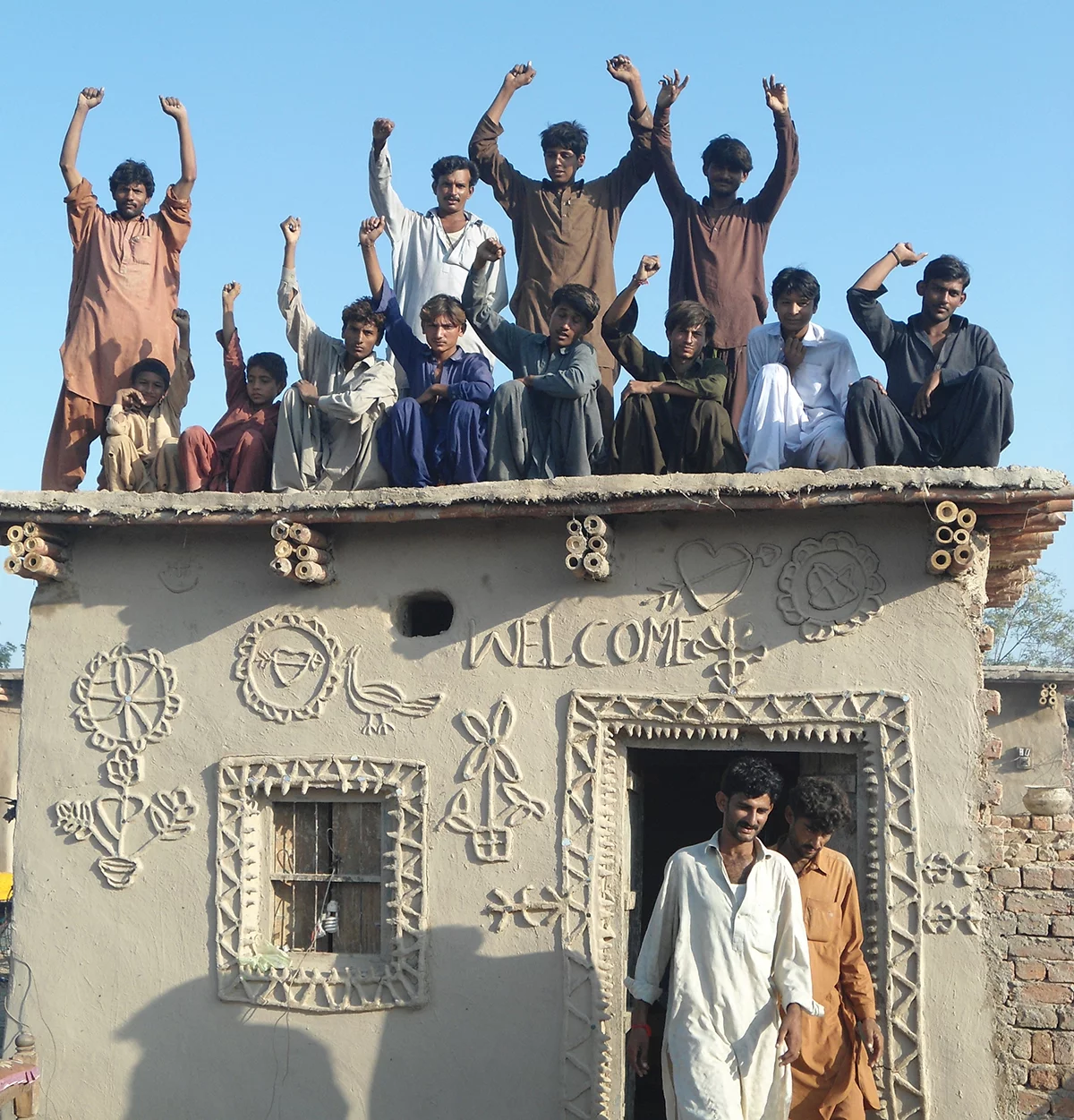
Empowering women
I believe women have the potential of doing a lot of things. They just need that space and the chance to do it. This is true for the poorer areas as well. Now, I work mostly with women who live in these really disadvantaged areas. I have found that you show them a direction and they will follow it. Despite all the difficulties they have, they are the best ones to get results, because they feel that it is in their interest and the interest of their families.
I know I keep on saying that I’m privileged, but I really do believe that. When I look at the adversity, and I look at the people and the way they live, what they’re confronted with every single day … well, I should have nothing to complain about. But what we have to do now is work harder, so we can somehow economically empower them, so they are able to stand on their own.
I think there are many things that we can do. We need to look at crafts, where our women are doing a fantastic job of production. We need to look at disaster preparedness. That means you learn how to build with mud brick and lime.
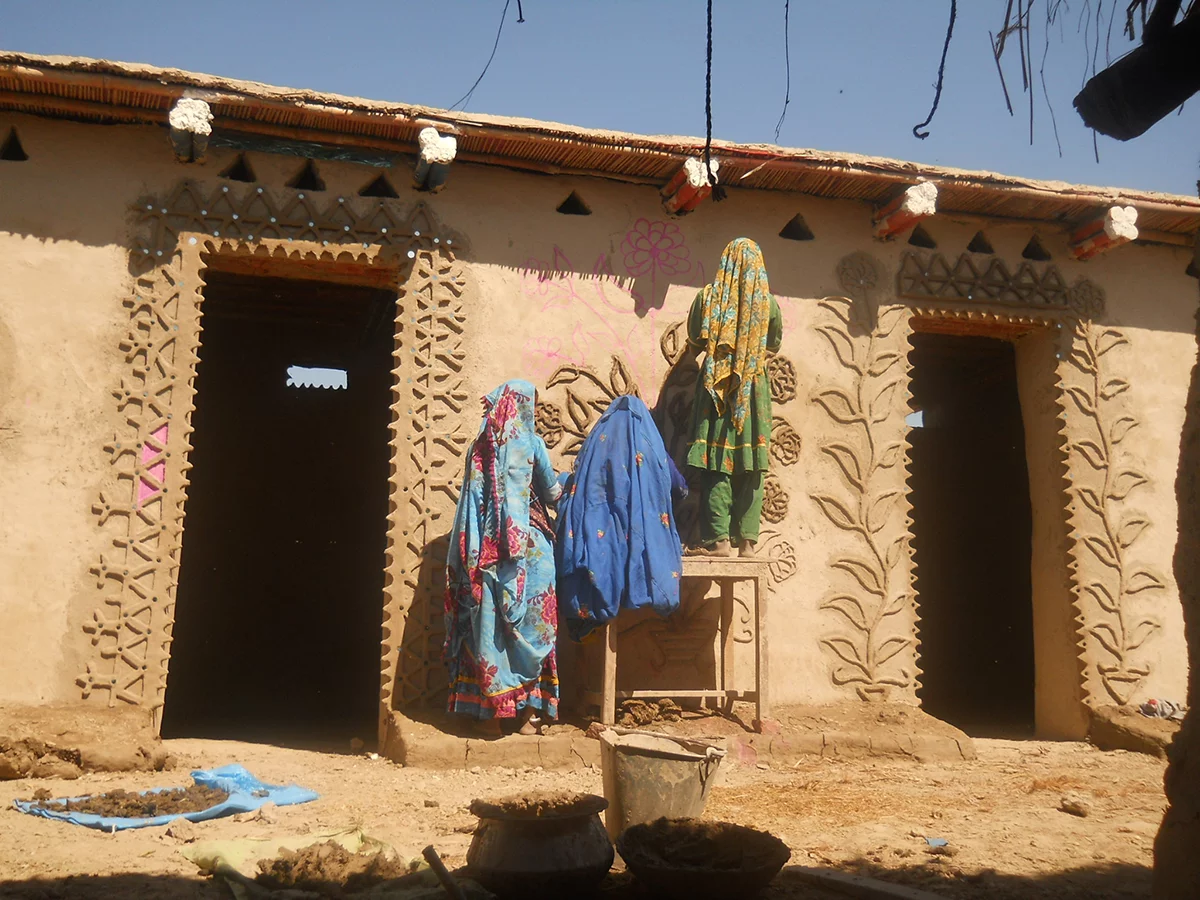
It’s not possible to achieve it every time, but I try hard to implement tasks in which men can participate. Someone asked me the question: Is there a conflict if women are brought forward? Will men get left behind? And the funny thing is that in these areas, once women start earning, the men join in to help out. They become equal partners. They understand that it’s for their benefit too. It’s not really a problem if you don’t disturb the order. We try to be very discreet about it. We gradually induct women in or educate them about what to do. It’s a slow process, but I think it’s important to do it in a manner where the men don’t feel left out or threatened. We don’t want conflict. We don’t want that – either at home or in society. It’s difficult, but it doesn’t mean that we should not allow women to maximise their own capacities. It shouldn’t deter us. We should continue to work at that.
One of our important projects is the Pakistan Chulah [stove made from earth and lime]. It’s been a no-cost project, apart from the training of women in the beginning. Something like 50,000 stoves have been built, at no cost to us. There is this one particular husband and wife we trained who belonged to a minority community. Though they had lots of obstacles to overcome, they decided to take it up. After training, they went out to spread the message. They started with their own village, and they got it all going. Then they moved to the next village. Just through word of mouth, women from other villages would come for weddings or funerals, and they would see the product and wanted to build one too. So, this is how it spread. This couple charged US$2 to teach others how to construct the stove. So by teaching others, as Barefoot Entrepreneurs they have been able to earn an income of more than US$50,000 in three years (their original income was only $600 per year).
With the Pakistan Chulah, I think we’ve raised the status of women, because previously they would be sitting on the floor, on this open-flame stove to cook with – inhaling smoke, getting respiratory diseases, eye diseases, and the dirt and filth around them would contaminate the food, because it was on the floor. So, with the new stove we are elevating them, because the chulah is on an earthen platform. Their status in society is raised, because they’re not sitting in the dirt all the time and the hygiene is better. And it’s so easy to keep the chulah clean – if it gets damaged, it’s easy to repair it with mud. Whenever I have gone to visit them, the stove is always really clean. It’s amazing. They decorate them. There’s so much pride. And then the men start to really respect them. And that’s what we need to do – to help transform their lives by giving them dignity.
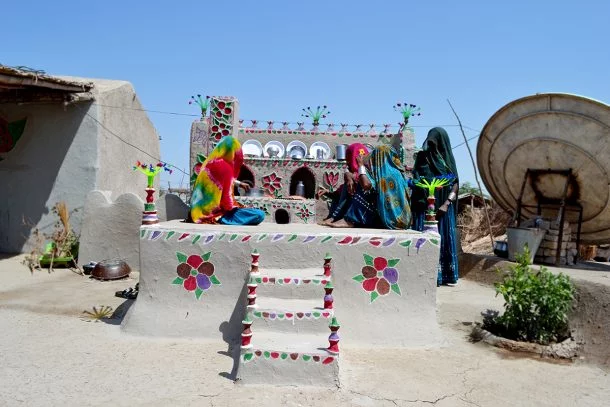
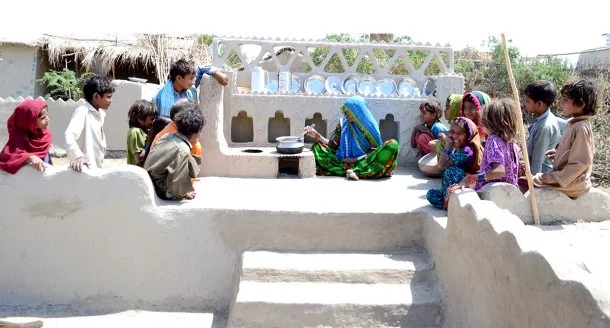
Humanitarian work – encouraging pride and achieving self-sufficiency
I’m very much against the Western charity model of donations and aid. It really destroys self-respect. People in the poorest areas of Pakistan are very proud. But after the 2005 earthquake in Hazara and Kashmir, so much money and so many organisations came in giving things away. I think that destroyed their self-respect. I think it’s very wrong. For several years, we had some difficulty because there was so much aid coming in. But luckily in the last few years, donor fatigue has set in, so people have stopped giving money to Pakistan. Of course, there are other issues as well. But for humanitarian work there is hardly any funding now. So, that has allowed us to go forward and use other approaches.
With this last project we did, the Green Shelters program, something like 800 shelters have been built for a community of beggars near the Makli World Heritage Site. It’s an amazing heritage site, but people who live around there are extremely poor. Men, women and children were all begging. They begged near the shrines and got free food from the soup kitchens, so they didn’t need to work. It took us a year or so to make inroads and then one woman agreed to start making miniature glazed ceramic tiles, based on ancient craft we were using for the monuments. We trained her and she gave up begging and started to sell those. So, she really is the bravest woman I know, because to break out of that cycle is very challenging. Then more women joined in.

Then we decided to start a program particularly for this community. We tell the households that we’re going to give you something, but you have to do something in return. I tell people, “This is a gift, but it’s not for free. Here is a shelter that you must finish, but you must also put in one month of voluntary work for community benefit. That is the deal.” And they have just gone right ahead and cleaned up the muck and dirt from their communities. And they’re all so proud of having their house – and they’ve learned the techniques, how to increase it incrementally or do whatever else is needed.
We don’t need major investments. I only work in mud, lime and bamboo. It’s very inexpensive. I just need everybody to have one safe shelter, that’s all. So, they’re not affected when it floods, or an earthquake happens. Beyond that, they can do what they want.
So, of all those begging, there are only a dozen left who are still doing it, the older ones who do it out of habit. But everybody else is now trying to find a job, do something, learn the skills that we are teaching and going ahead. And there are new needs appearing – for furniture and other things. We’re teaching them how to make bamboo tables. They get bamboo for free [from us], but they build it themselves. There is huge possibility for change. And it only costs me $250 to transform a family. So, that’s why we don’t need a lot of money really. I keep saying it, but nobody believes me (laugh).
You need very little to transform lives. You just need to make them into equal partners. You must work together with them. So, it’s very interesting. I find it very exciting. Small things can make a huge difference. To a star architect, it wouldn’t mean a thing – but for me, it’s amazing. When they even start to write their signature, that’s a very big step.
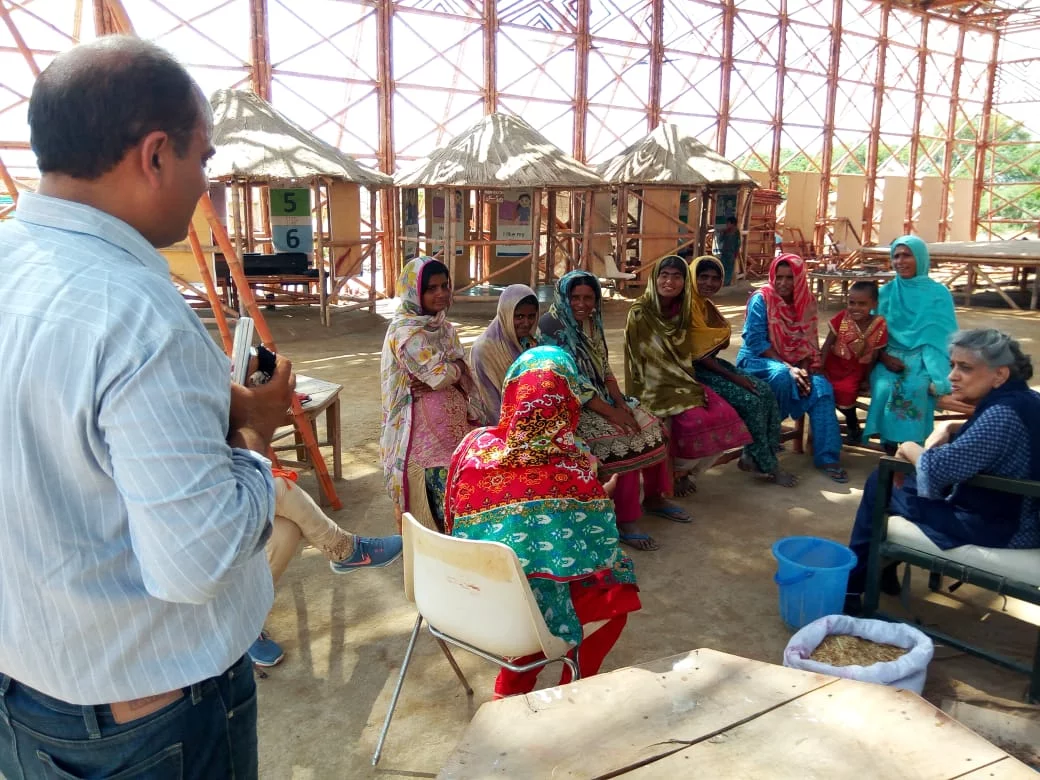
Greatest achievements
I’ve had an amazing life. I don’t believe in doing things that I don’t like or that are boring, so I think I did the right thing to get off the train of architecture at the time that I did, because that opened up many different avenues for me. When we sat out on the streets of Karachi celebrating the city’s heritage, people thought Karachi didn’t have any heritage since it was British. So, that taught me to sit out in the streets with people. And there was a whole process of losing your ego. And then I got the chance to work with UNESCO on other heritage work. There are many different kinds of things I have done, and for me they were all very interesting.
But, I have to say that the work I’m doing now is the most rewarding. I get a high every day hearing about what is happening – how many women have come in to learn something more, or whatever it is. There’s a former beggar man who comes in and we taught him how to make this bamboo furniture – and he started selling it after making it. Then, one day he came in and showed me this 500 rupee note (which is about $5), and he said “This is the first time I’ve earned money in my life of 45 years, and I’m going to keep this note, because it’s the first time I’ve earned money.” Things like that are very encouraging. They keep you going.
I’m very old now, and people ask me why I still work. I don’t think I could sit back at home, because there is still work to do. I enjoy it. It’s great fun. Shaking the system is particularly exciting. For instance, I have a lot of opposition about me using bamboo in my heritage work, and that’s fine. But you need to find different ways of doing things. There’s so much heritage in Pakistan. If we can’t find economical ways of doing the work, we can’t save it. We need to find ways of stabilising the structures and extending their life at a low cost, for maybe 15 years. And then, when the money comes in, you can conserve as you wish. But you have to save this heritage now.
It’s all interesting to me, because there’s so much that could be done and should be done. Because I’m so old, I feel I have little time, so I have to implement my work fast.
Advice to your younger self
Follow your dream. Try to do what you really believe in. And don’t get discouraged, because there will be lots of hurdles in the way. But you must have the commitment and the strength to follow what you believe in.
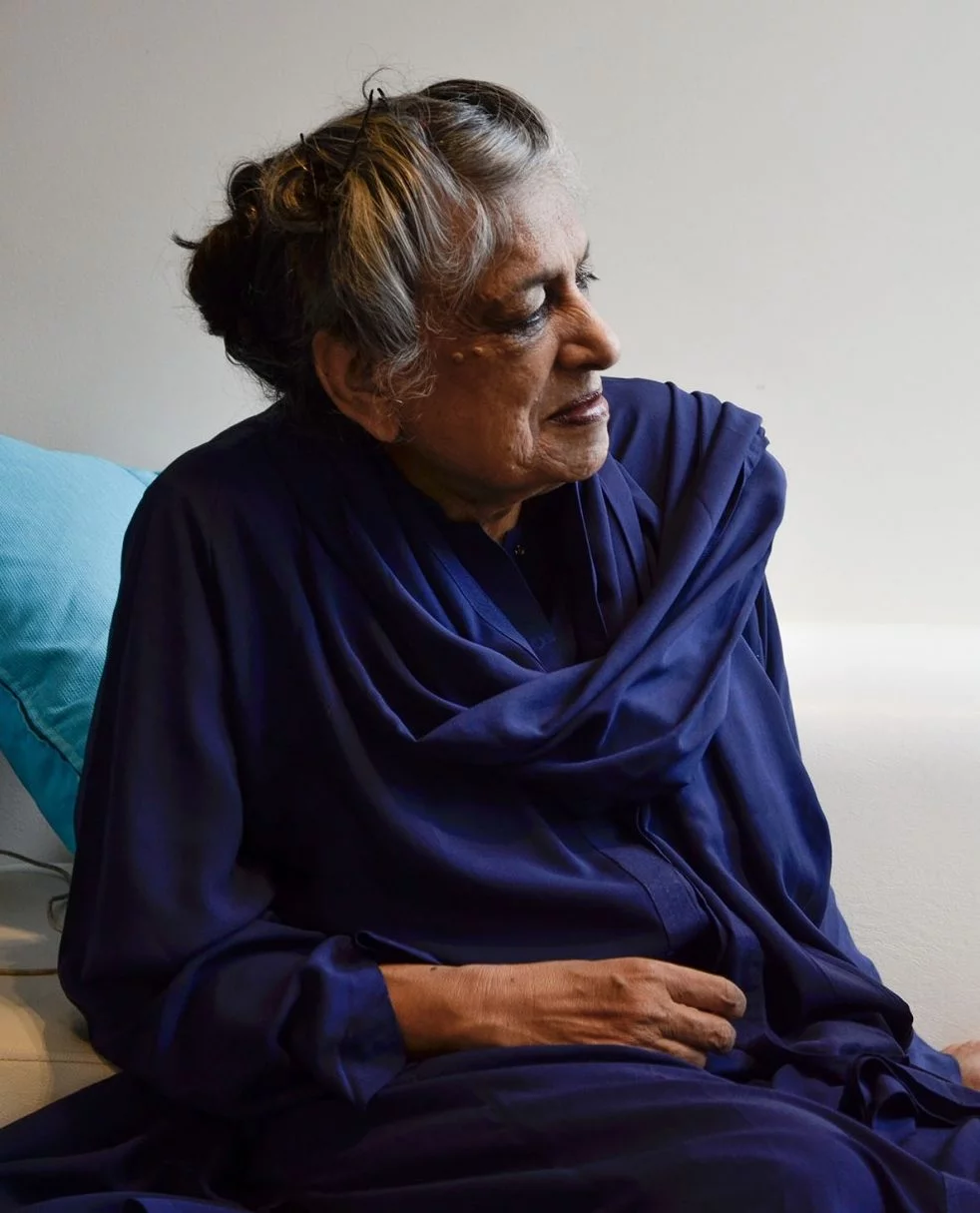
Yasmeen Lari was in Melbourne for a series of RMIT Humanitarian Architecture Week events from 6–9 August. Thanks to Alison Cleary from Architects without Frontiers and Esther Charlesworth from RMIT’s MoDDD (Master of Disaster, Design and Development). Thanks also to Gordon Farrer for the photographs.
Yasmeen Lari is Pakistan’s first woman architect and among the best-known architects of the country. She graduated from Oxford School of Architecture (now Oxford Brookes University) and was elected to the Royal Institute of British Architects (RIBA) in 1969. She has built several landmark buildings in Pakistan, such as the FTC, PSO House and ABN Amro Bank, Karachi. Lari was elected president of the Institute of Architects Pakistan in 1978 and was the first chairperson of Pakistan Council of Architects and Town Planners (PCATP) in 1983. She retired from architectural practice in 2000. She is a UNESCO consultant and has been published among 60 Women who have contributed the most towards UNESCO’s objectives. She co-founded the Heritage Foundation of Pakistan in 1980 with her husband, noted historian Suhail Zaheer Lari, for undertaking research and safeguarding Pakistan’s cultural heritage. She has conserved several historic monuments in the World Heritage Sites of Makli and Lahore Fort. Since Pakistan’s earthquake in 2005, she has devised various programs based on women-centred zero carbon footprint structures and sustainable building techniques, resulting in 40,000 green shelters (using bamboo, lime and mud), placing Pakistan in the lead as the world’s largest zero carbon shelter program, herself being acknowledged as among the largest providers of shelter. She is the author and co-author of several books and has lectured extensively at home and abroad.
Alison Cleary is a broad-based management, communications and advocacy specialist with over 30 years’ experience in the built environment, social justice, community development, arts and environment sectors in Australia, Asia and the Pacific region. Currently a Board member for Architects Without Frontiers and Open House Melbourne, her most recent full-time role from late 2010 through to August 2017 was as the Victorian Executive Director of the Australian Institute of Architects (late 2010–2017). Alison has also worked in a number of roles with both Oxfam and the Australian Conservation Foundation, including the role of Oxfam International’s Tsunami Policy Lead for several years following the 2004 Asian Tsunami. She has worked with a diverse range of organisations, including professional associations; social justice, environment and international development NGOs; international foundations; entertainment and arts organisations; trade unions; large corporations and local government associations.
Interview by Alison Cleary and Susie Ashworth. Compiled and edited by Susie Ashworth.












